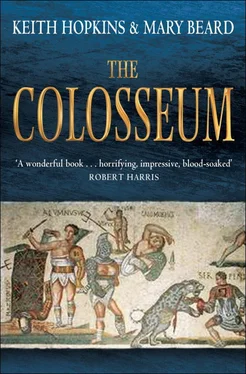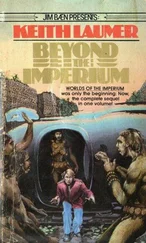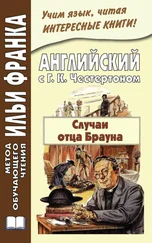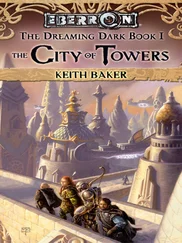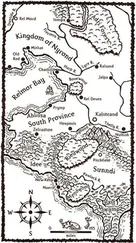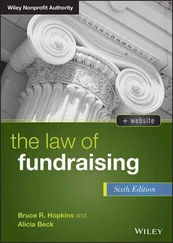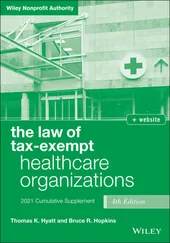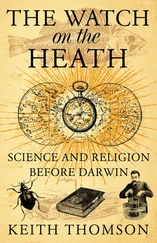Keith Hopkins - The Colosseum
Здесь есть возможность читать онлайн «Keith Hopkins - The Colosseum» весь текст электронной книги совершенно бесплатно (целиком полную версию без сокращений). В некоторых случаях можно слушать аудио, скачать через торрент в формате fb2 и присутствует краткое содержание. Город: London, Год выпуска: 2011, ISBN: 2011, Издательство: Profile Books, Жанр: История, на английском языке. Описание произведения, (предисловие) а так же отзывы посетителей доступны на портале библиотеки ЛибКат.
- Название:The Colosseum
- Автор:
- Издательство:Profile Books
- Жанр:
- Год:2011
- Город:London
- ISBN:9781846684708
- Рейтинг книги:3 / 5. Голосов: 1
-
Избранное:Добавить в избранное
- Отзывы:
-
Ваша оценка:
- 60
- 1
- 2
- 3
- 4
- 5
The Colosseum: краткое содержание, описание и аннотация
Предлагаем к чтению аннотацию, описание, краткое содержание или предисловие (зависит от того, что написал сам автор книги «The Colosseum»). Если вы не нашли необходимую информацию о книге — напишите в комментариях, мы постараемся отыскать её.
The Colosseum — читать онлайн бесплатно полную книгу (весь текст) целиком
Ниже представлен текст книги, разбитый по страницам. Система сохранения места последней прочитанной страницы, позволяет с удобством читать онлайн бесплатно книгу «The Colosseum», без необходимости каждый раз заново искать на чём Вы остановились. Поставьте закладку, и сможете в любой момент перейти на страницу, на которой закончили чтение.
Интервал:
Закладка:
The pre-Colosseum history of the amphitheatre is now expertly explored by K. Welch in The Roman Amphitheatre . Caligula’s disdain for the monument of the aristocrat (one Statilius Taurus) is reported in Book 59 of Dio’s History . The amazed rustics are a creation of the poet Calpurnius Siculus, whose Eclogues are translated in Minor Latin Poets (Loeb Classical Library); Eclogue 7 spotlights the amphitheatre. The political analysis presented in this chapter draws on the discussion in Hopkins, Death and Renewal (Chapters 2 and 3). Other, differently nuanced, accounts of the political shifts in Rome over this period include J. R. Patterson, Political Life in the City of Rome (London, 2000), a very useful review, primarily intended for students, and T. P. Wiseman, Roman Political Life 90 BC–AD 69 (Exeter, 1985). Those shifts are also the theme of R. Syme’s classic, The Roman Revolution (Oxford, 1939), written in the shadow of the European dictatorships of the 1930s. Ancient Chinese reactions to Rome are collected in F. Hirth, China and the Roman Orient: researches into their ancient and medieval relations as represented in old Chinese records (Leipzig, 1885).
CHAPTERS 3 AND 4
The varied displays in the arena (including several of the acts lauded by Martial) are the subject of influential essays by K. Coleman, ‘Fatal Charades: Roman executions staged as mythological enactments’, Journal of Roman Studies , 80 (1990) and ‘Launching into History: aquatic displays in the early empire’, Journal of Roman Studies , 83 (1993). The translation we have used of the Laureolus/Prometheus verse is by F. Ahl, from another collection of translations of Martial, Epigrams of Martial, Englished by divers hands (Berkeley & London, 1987) (eds. J. P. Sullivan and P. Whigham). Tertullian’s main attack on such displays is to be found in his De Spectaculis (On the Shows ).
Most discussions of ‘what happened’ at gladiatorial shows rely on a few key texts in addition to Martial: notably, Seneca’s Letter 7, describing the lunchtime executions; the Passion of SS Perpetua and Felicity (not available in either Loeb or Penguin translations, but there are several English versions – for example in H. Musurillo (ed.), The Acts of the Christian Martyrs: introduction, texts and translations (Oxford, 1972), and R. Valantasis (ed.), Religions of Late Antiquity in Practice (Princeton, 2000)); and Dio’s descriptions of the emperor Commodus’ antics in the arena in Book 73 of his History (on which, see Chapter 4 of O. Hekster, Commodus: an emperor at the crossroads (Amsterdam, 2002)). Less often used is the rhetorical exercise on the gladiatorial theme – one of the Declamations once (wrongly) believed to have been written by the Roman oratorical theorist Quintilian, now translated in L. A. Sussman (ed.), The Major Declamations Ascribed to Quintilian: a translation (Frankfurt etc., 1987). But much of the ancient evidence for the activities in the arena is scattered, fragmentary, untranslated and hard to track down outside a major research library. Other literary texts we have referred to are: the Letters of Symmachus, esp. nos. 2, 46 and 10, 8 & 9 (translated into French in the Budé series); Olympiodorus (41.2, on Symmachus’ expenditure), translated in R. C. Blockley (ed.), Fragmentary Classicizing Historians of the later Roman Empire , Volume 2 (Liverpool, 1983); Seneca, Letter 70 (on the suicide of the Germans); Plutarch’s essay A Pleasant Life is Impossible following the precepts of Epicurus (for his aside, Chapter 17, on the gladiators’ last meal); and, on the same subject, an aside in another tract of Tertullian, the Apologeticus (Chapter 42). The late-Roman figures for seating capacity are taken from the so-called Regionary Catalogues (Notitia Urbis Romae – for which there is no easily available English translation). Galen’s career with gladiators is discussed by J. Scarborough, ‘Galen and the Gladiators’, in Episteme , 5 (1971).
Our calculations of gladiatorial numbers and death rates, as well as our reconstruction of other aspects of the world of the arena, depend heavily on the evidence of inscriptions. Text and translation of the decree regulating expenditure under Marcus Aurelius can be found in J. H. Oliver and R. E. A. Palmer, ‘Minutes of an Act of the Roman Senate’, Hesperia , 24 (1955) with further discussion by M. Carter in Phoenix , 57 (2003). Gladiatorial graffiti from Pompeii is conveniently collected in L. Jacobelli, Gladiators at Pompeii (Rome, 2003). The calendar of Trajan’s celebrations is published (untranslated) in A. Degrassi, Inscriptiones Italiae 13, 1 (Rome, 1947); Glauco can be found in the vast multi-volume collection of Roman inscriptions, the Corpus Inscriptionum Latinarum , Volume 5, 3466; and the Thracian in Volume 6, 10194. The best text of the seating arrangements of the Arvals in the arena is in J. Scheid, Commentarii Fratrum Arvalium quae supersunt (Rome, 1998), Document 48 (with French translation). The death of eleven gladiators out of eleven pairs is recorded in the Corpus , volume 10, 6012.
The idea of the gladiatorial spectacles as ‘political theatre’ is a major theme of Hopkins’ ‘Murderous Games’, in Death and Renewal . The simplicity of that model is effectively challenged by J. Edmondson, ‘Dynamic Arenas’, in W. J. Slater (ed.), Roman Theater and Society: E. Togo Salmon papers 1 (Ann Arbor, 1996) – a notably acute study whose approach we have generally followed here. The ‘ infamia ’ of gladiators is explored by C. Edwards in ‘Unspeakable Professions’, in J. P. Hallett and M. B. Skinner (eds.), Roman Sexualities (Princeton, 1997). On Spartacus, see, B. Strauss, The Spartacus War , (London, 2009), T. Urbainczyk, Spartacus , (London, 2004); and more lyrically, P. Stothard, On the Spartacus Road , (London, 2010). The insult ‘gladiator’ is used more than once by Cicero of his enemy Mark Antony in his remarkable series of political invectives known as the Philippics ; the ghastly possibility that a dead son might have ended up as a gladiator is raised by Seneca in his Letter 99; prohibitions on the elite becoming gladiators are discussed by B. Levick in ‘The Senatus Consultum from Larinum’, Journal of Roman Studies , 73 (1983). The bizarre custom involving the bride’s hair is mentioned in the Roman dictionary of Festus, De Significatione Verborum (ed. W. Lindsay), 55.
The sexuality and glamour of the gladiator is discussed (with emphasis on the power of ‘visuality’) by E. Gunderson in ‘The Ideology of the Arena’, Classical Antiquity , 15 (1996), as well as in Edwards’ ‘Unspeakable Professions’ (whence the phrase ‘all sword’) and in Barton’s Sorrows of the Ancient Romans (the source of our quotation about the tintinnabulum from Herculaneum). One famous nineteenth-century version of the arena’s high charge is expertly dissected by E. Prettejohn in ‘“The Monstrous Diversion of a Show of Gladiators”: Simeon Solomon’s Habet! ’ in Edwards (ed.), Roman Presences . The classic passage of Juvenal is from his sixth Satire (here translated by Peter Green); the lurid story of Faustina and the gladiator is told in the SHA biography of Marcus Antoninus (i.e. Aurelius); the pick-up of Sulla is described in Plutarch’s Life of Sulla . Appropriate cold water is poured on the story of the rich lady in the gladiators’ barracks by P. G. Guzzo (ed.), Stories from an Eruption: Pompeii, Herculaneum and Oplontis (Milan, 2003).
Читать дальшеИнтервал:
Закладка:
Похожие книги на «The Colosseum»
Представляем Вашему вниманию похожие книги на «The Colosseum» списком для выбора. Мы отобрали схожую по названию и смыслу литературу в надежде предоставить читателям больше вариантов отыскать новые, интересные, ещё непрочитанные произведения.
Обсуждение, отзывы о книге «The Colosseum» и просто собственные мнения читателей. Оставьте ваши комментарии, напишите, что Вы думаете о произведении, его смысле или главных героях. Укажите что конкретно понравилось, а что нет, и почему Вы так считаете.
